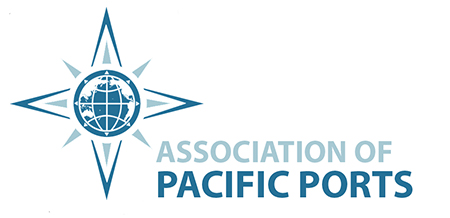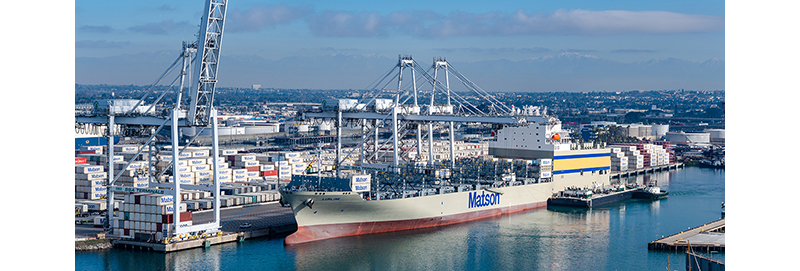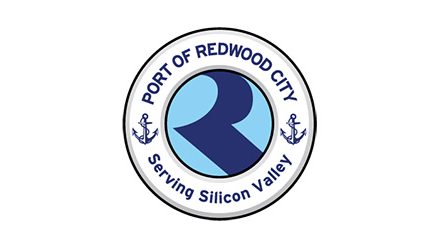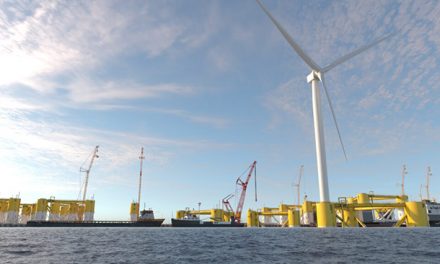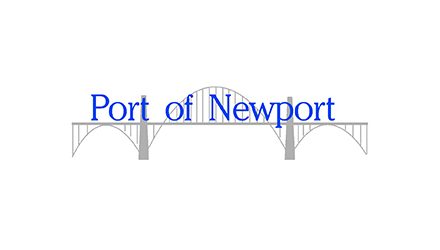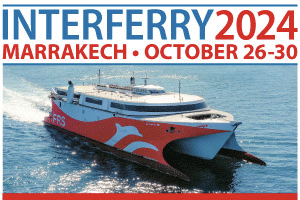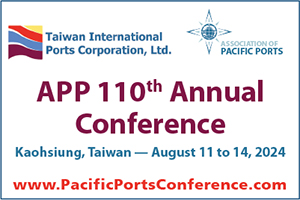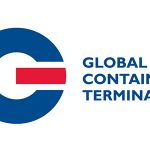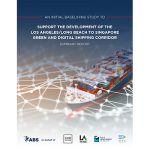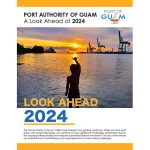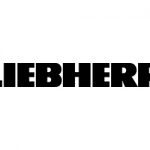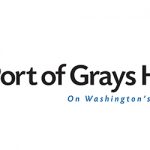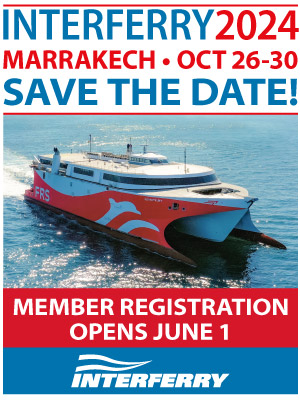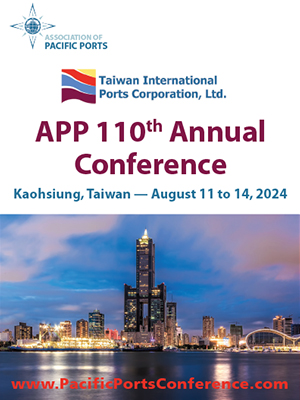March 1, 2023 — When “K” Line’s Long Beach Bridge arrived at the Port of Long Beach in 2008, it was more than just another ship call.
Outwardly, the operations involved in berthing the container ship would have seemed routine: a pilot boarded outside of the breakwater to guide the vessel to the International Transportation Service terminal at Pier G. Mooring operations secured the behemoth vessel to land, allowing ship-to-shore cranes to begin plucking containers. A weather eye might have noticed dockworkers dragging a long cable to the Long Beach Bridge, connecting it into a container-like box on the ship’s side.
Soon after, the ship switched off its auxiliary engines, which were normally used to power vital systems. But the systems – lighting, pumps, computers, air conditioning – churned on. The Long Beach Bridge became the first ship at the Port to plug into shoreside electrical power, eliminating the need to burn diesel fuel to “keep the lights on” during its stay and preventing the accompanying emissions from escaping into the harbor air.
Today, container ships at all of California’s major ports use shore power, thanks to technology developed at the Port of Long Beach.
Yet shore power is only one way that the Port works to improve air quality and cut greenhouse gases from vessels. Almost 15 years after that visit by the Long Beach Bridge, the Port is still pioneering ways to make international shipping greener while it pursues a goal of becoming the nation’s first zero-emissions port for drayage and cargo handling.
“When it comes to tackling emissions from the oceangoing ships that call here, we are no less aggressive, finding ways to push for the cleanest possible ships to visit,” said Port of Long Beach Executive Director Mario Cordero. “We have programs that reward operators for deploying today’s newest, greenest ships, and for slowing their vessels down as they approach, eliminating thousands of tons of emissions each year.”
As society faces the rising threat of climate change, shipping lines are now putting into service more ships using cleaner fuels such as liquefied natural gas. Major ocean carriers that visit the Port of Long Beach including Maersk, CMA-CGM and COSCO Shipping have on order several new methanol-powered ships to be added to their fleets.
“The Port is making rapid advances toward our goals of transitioning the trucks and terminal equipment handling cargo toward zero emissions,” said Long Beach Harbor Commission President Sharon L. Weissman. “A key to these advancements is being technology- and fuel-neutral, and focusing on an end goal of becoming cleaner, as quickly as possible. Welcoming ships using the cleanest fuels currently available is an instrumental part of making progress in reducing emissions.”
The Port remains focused on attracting the greenest available ships, and recently updated its Green Ship Incentive Program to offer the highest bonuses in the world to attract the cleanest ships in service. The refreshed program incorporates the international Environmental Ship Index, which identifies seagoing ships exceeding the current emissions standards of the International Maritime Organization. Additionally, a joint initiative with the Port of Los Angeles, the Technology Advancement Program, invests in projects by private industry to reduce emissions.
Building on nearly two decades of green initiatives, the Port has also established the Zero Emissions, Energy Resilient Operations Program – known as ZEERO – to invest in projects aimed at reducing the impacts of operations and improving air quality. ZEERO includes a commitment to accelerate deployment of the lowest carbon emission alternatives for oceangoing vessels.
To support the continuing decarbonization of the industry, the Port has joined the Shanghai-Los Angeles Green Shipping Corridor, a partnership of C40 Cities, ports, shipping companies and cargo owners convened to create a zero-emissions trans-Pacific trade route by 2030. Another, similar agreement is expected to be signed soon with the Maritime and Port Authority of Singapore, the Port of Los Angeles, and C40 Cities.
To learn more about how the Port of Long Beach is reducing air emissions from port-related operations, improving water quality in the harbor, protecting marine wildlife and implementing environmentally sustainable practices throughout the Port, visit www.polb.com/environment.
Photo caption: Matson’s Lurline was the first Tier 3 engine ship on the West Coast, which means the ship is one of the cleanest to call at the Port of Long Beach. The “conro” vessel, with a capacity for 3,500 containers and 6 decks of vehicles, is capable of using conventional fuel and LNG.
